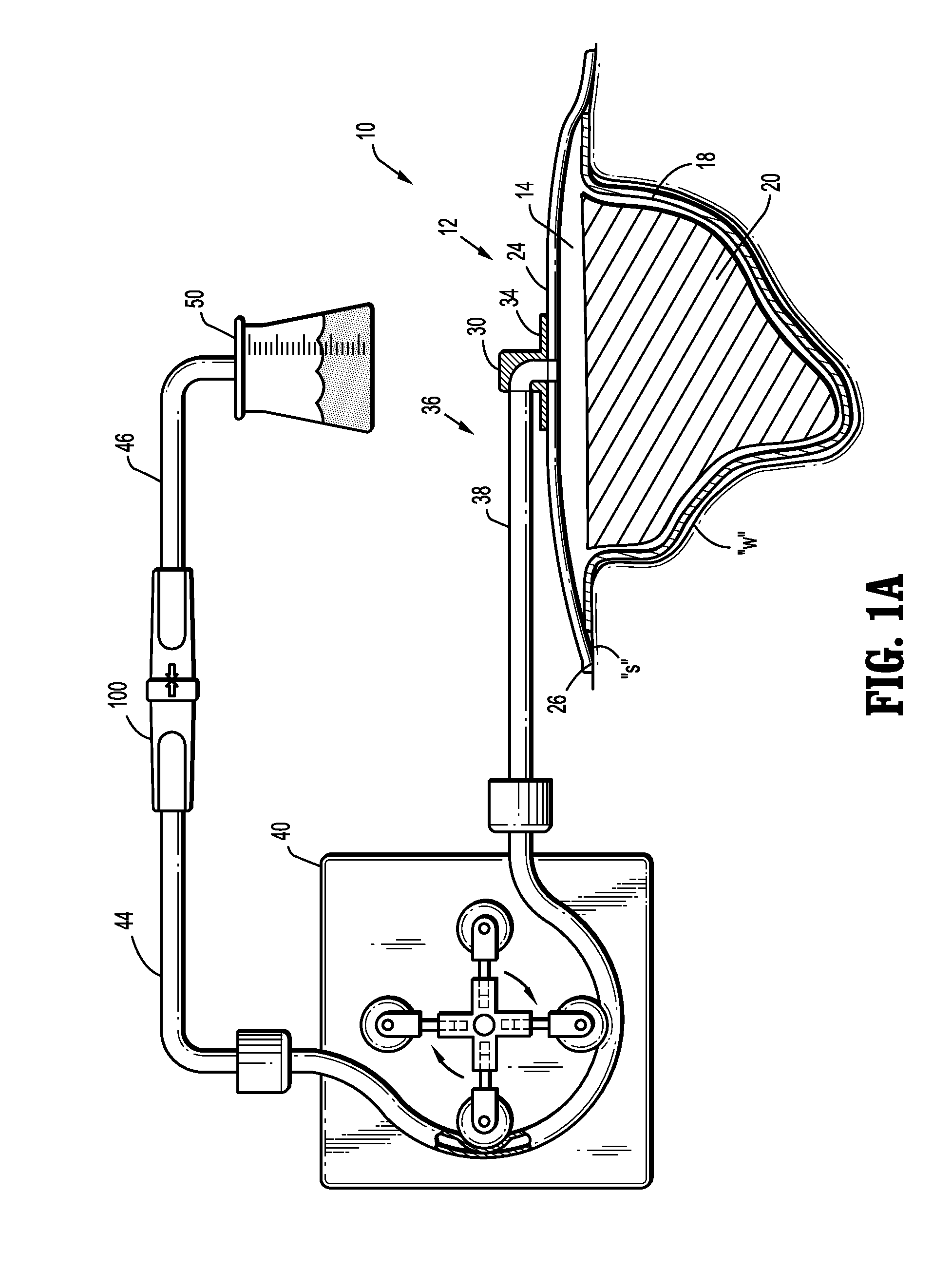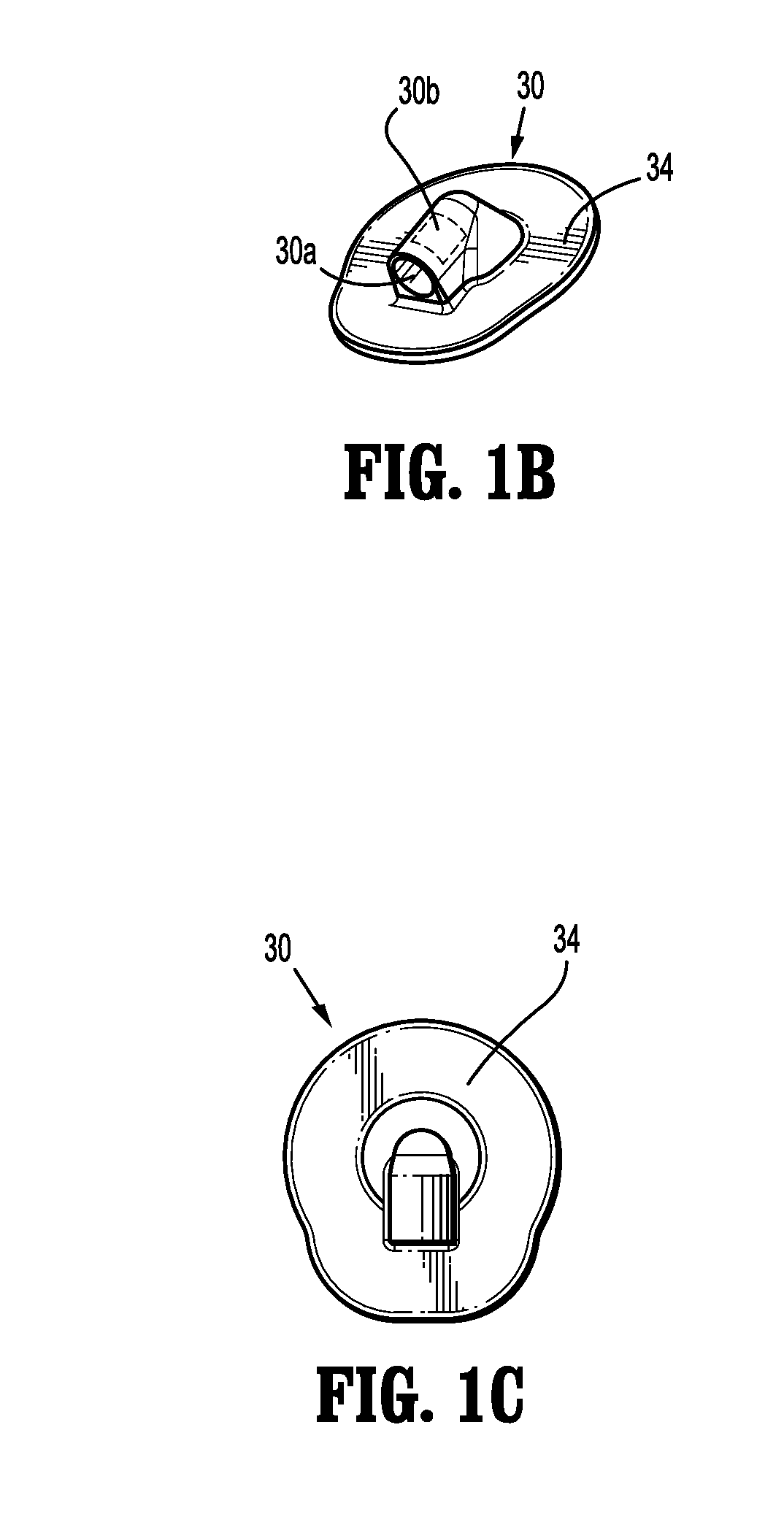Negative Pressure Wound Therapy Apparatus Including a Fluid Line Coupling
- Summary
- Abstract
- Description
- Claims
- Application Information
AI Technical Summary
Benefits of technology
Problems solved by technology
Method used
Image
Examples
second embodiment
[0077]Referring now to FIG. 3A, a fluid line coupling is depicted generally as 200 arranged in an engaged and locked configuration to fluidly couple first and second conduit portions 44, 46. Coupling 200 includes first and second coupling segments 202, 204 each receiving a respective one of the first and second conduit sections 44, 46 therein. Coupling segments 202, 204 are each tapered at one end to provide a gripping surface 206, which may be positioned between a thumb and a forefinger of an operator to facilitate engagement and disengagement of the coupling segments 202, 204. Gripping surfaces 206 are textured and extend laterally to assume a disk shape. This shape assists an operator in generating a torque between the coupling segments 202, 204 to allow the coupling segments 202, 204 to twist relative to one another to permit the engagement and disengagement of the coupling segments 202, 204. When the two coupling segments 202, 204 are properly engaged as depicted in FIG. 3A, fl...
third embodiment
[0079]Referring now to FIG. 4A, a fluid line coupling is depicted generally as 300 arranged in an engaged and locked configuration to fluidly couple first and second conduit sections 144, 146. Fluid conduit sections 144, 146 have a broader cross section than fluid conduit sections 44 and 46 to accommodate side-by-side flow channels. A multi-lumen conduit such as 144, 146 may be used in an NPWT apparatus to provide a redundancy such that fluid may flow through the conduit section 144, 146 even in the event one of the lumens becomes occluded. The occlusion of a lumen may occur, for example, as wound exudates are deposited on the interior walls of fluid conduit sections 144, 146 and accumulate until fluid flow is restricted.
[0080]Coupling 300 includes first and second coupling segments 302, 304 each receiving a respective one of the first and second conduit sections 144, 146 therein. Coupling segments 302, 304 each provide a number of depressed gripping surfaces 306 to facilitate handl...
fourth embodiment
[0084]Referring now to FIG. 5A, a fluid line coupling is depicted generally as 400 in a disengaged configuration. Coupling 400 includes first and second coupling segments 402, 404 each receiving a respective one of the first and second conduit sections 44, 46 therein. Coupling segments 402, 404 each provide a gripping component 406, 408 respectively, which may facilitate handling by an operator to engage and disengage first and second coupling segments 402, 404. When the two coupling segments 402, 404 are disengaged, fluid flow is restricted through first and second conduit sections 44, 46, but when coupling segments 402, 404 are properly engaged, fluids may pass freely between first and second conduit sections 44, 46. A locking nut 410 provides a locking mechanism for fluid line coupling 400. Locking nut 410 is positioned loosely around gripping component 406 of first coupling segment 402 such that it may rotate freely thereabout. Exterior threads 412 on gripping component 408 of s...
PUM
 Login to View More
Login to View More Abstract
Description
Claims
Application Information
 Login to View More
Login to View More - R&D
- Intellectual Property
- Life Sciences
- Materials
- Tech Scout
- Unparalleled Data Quality
- Higher Quality Content
- 60% Fewer Hallucinations
Browse by: Latest US Patents, China's latest patents, Technical Efficacy Thesaurus, Application Domain, Technology Topic, Popular Technical Reports.
© 2025 PatSnap. All rights reserved.Legal|Privacy policy|Modern Slavery Act Transparency Statement|Sitemap|About US| Contact US: help@patsnap.com



